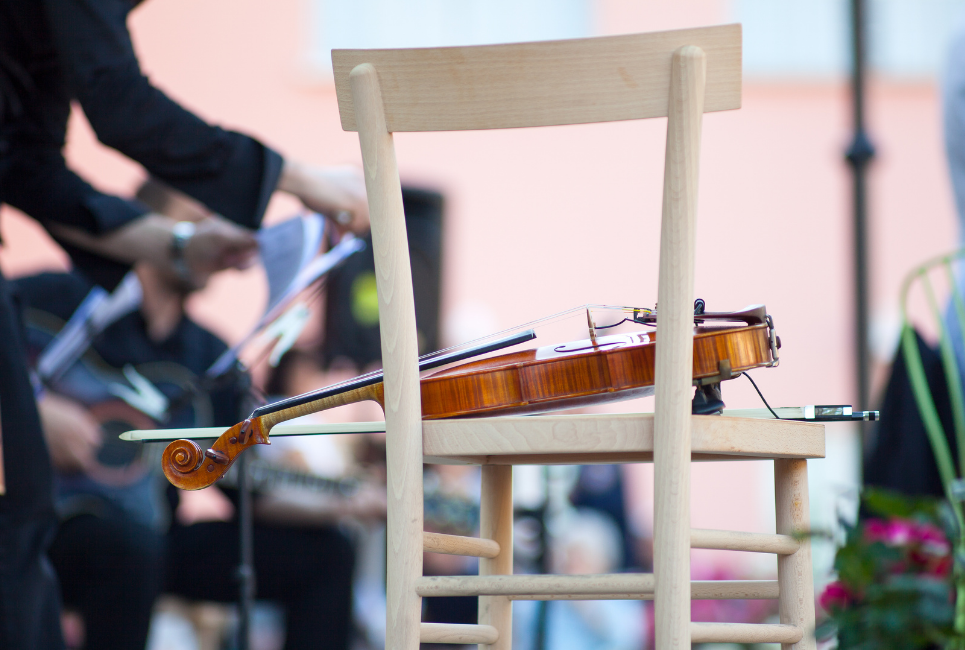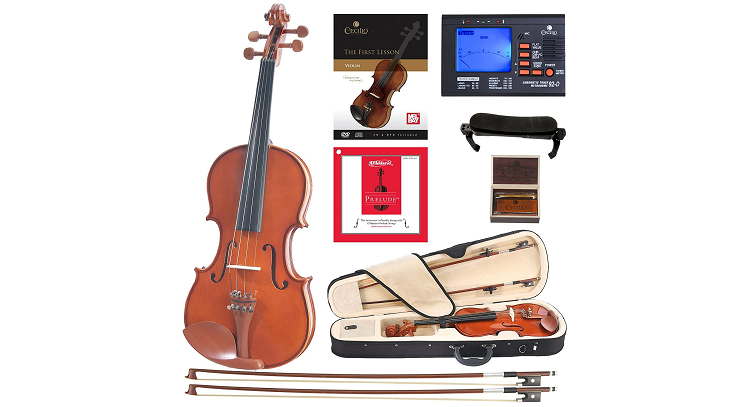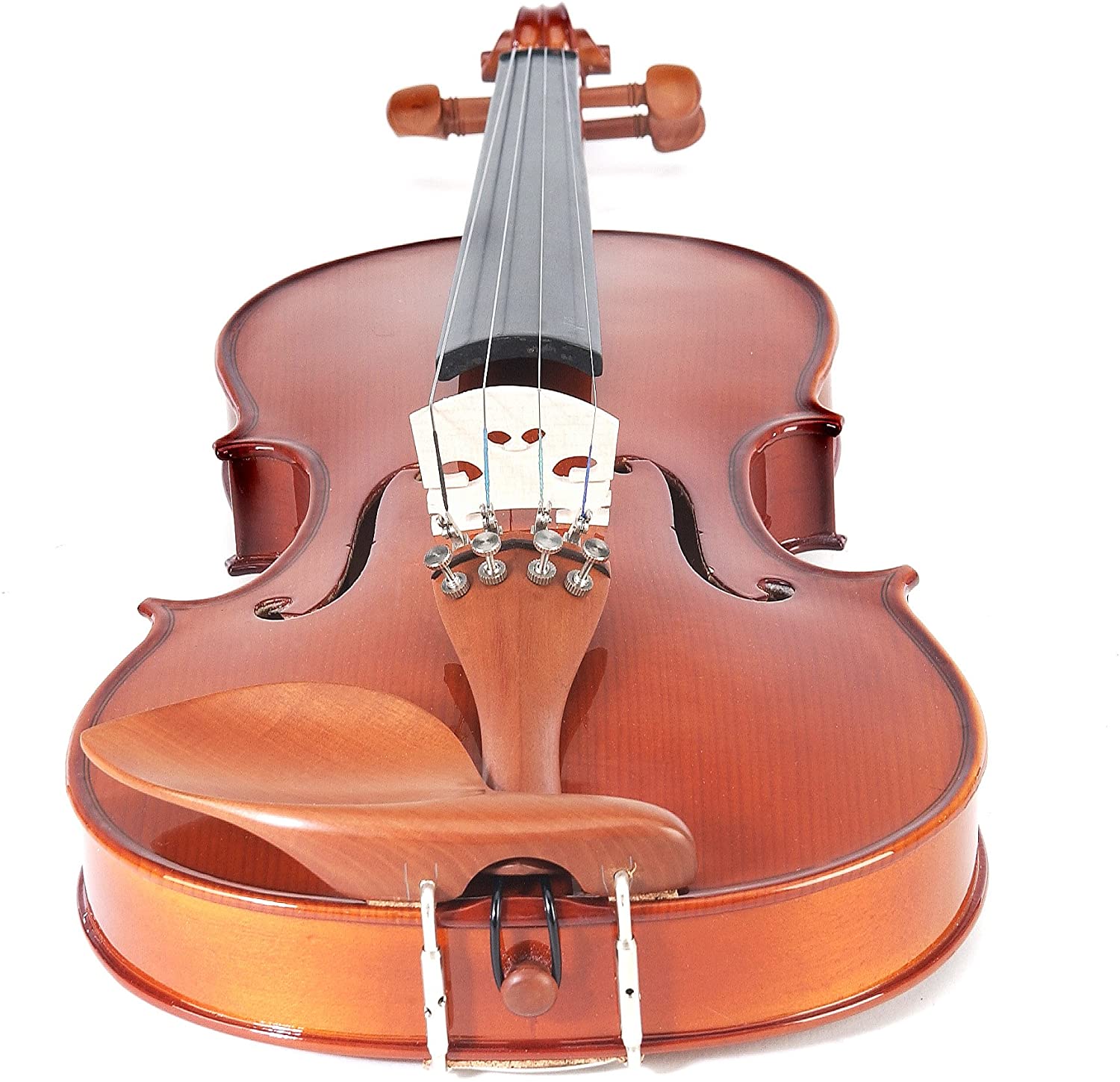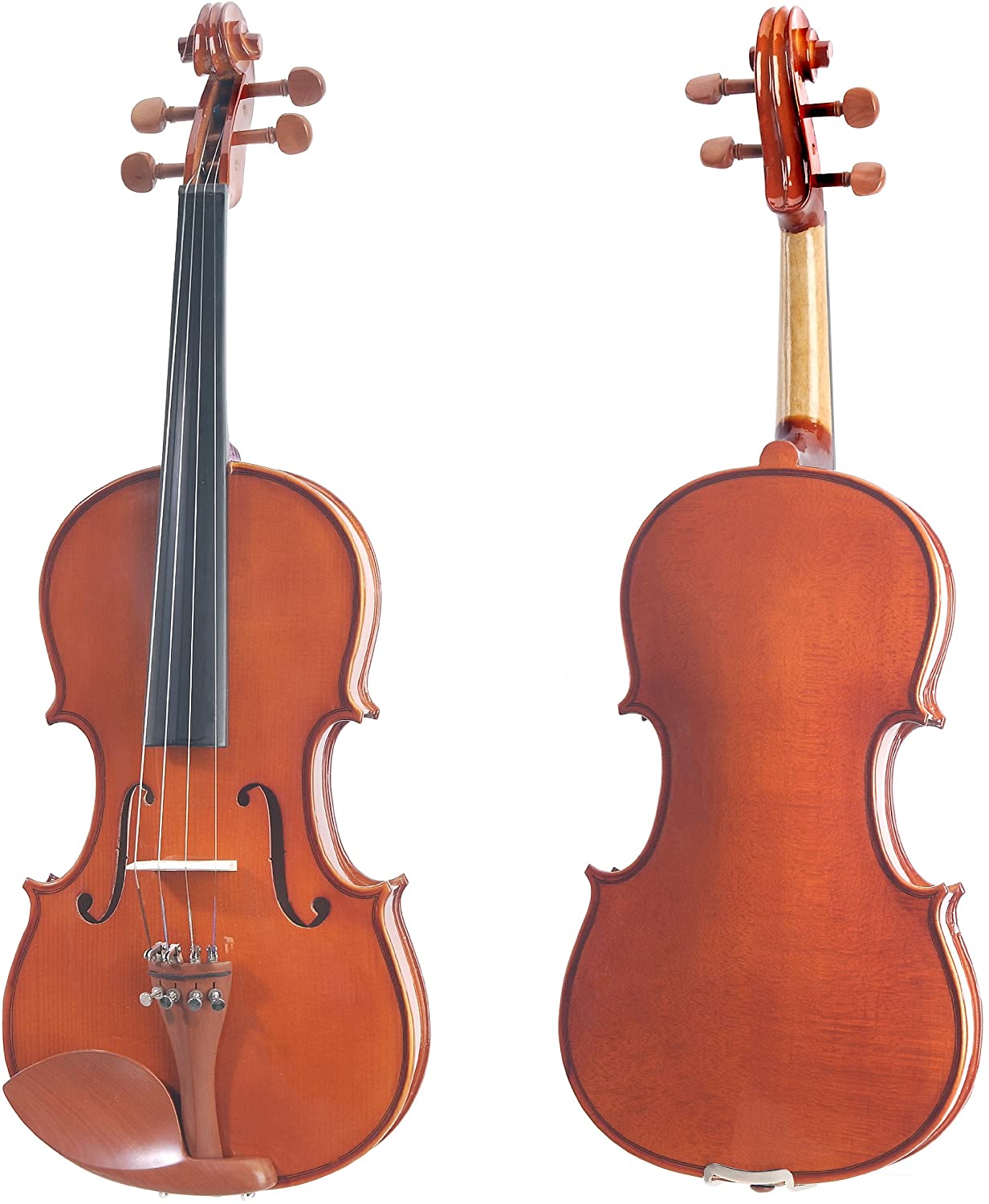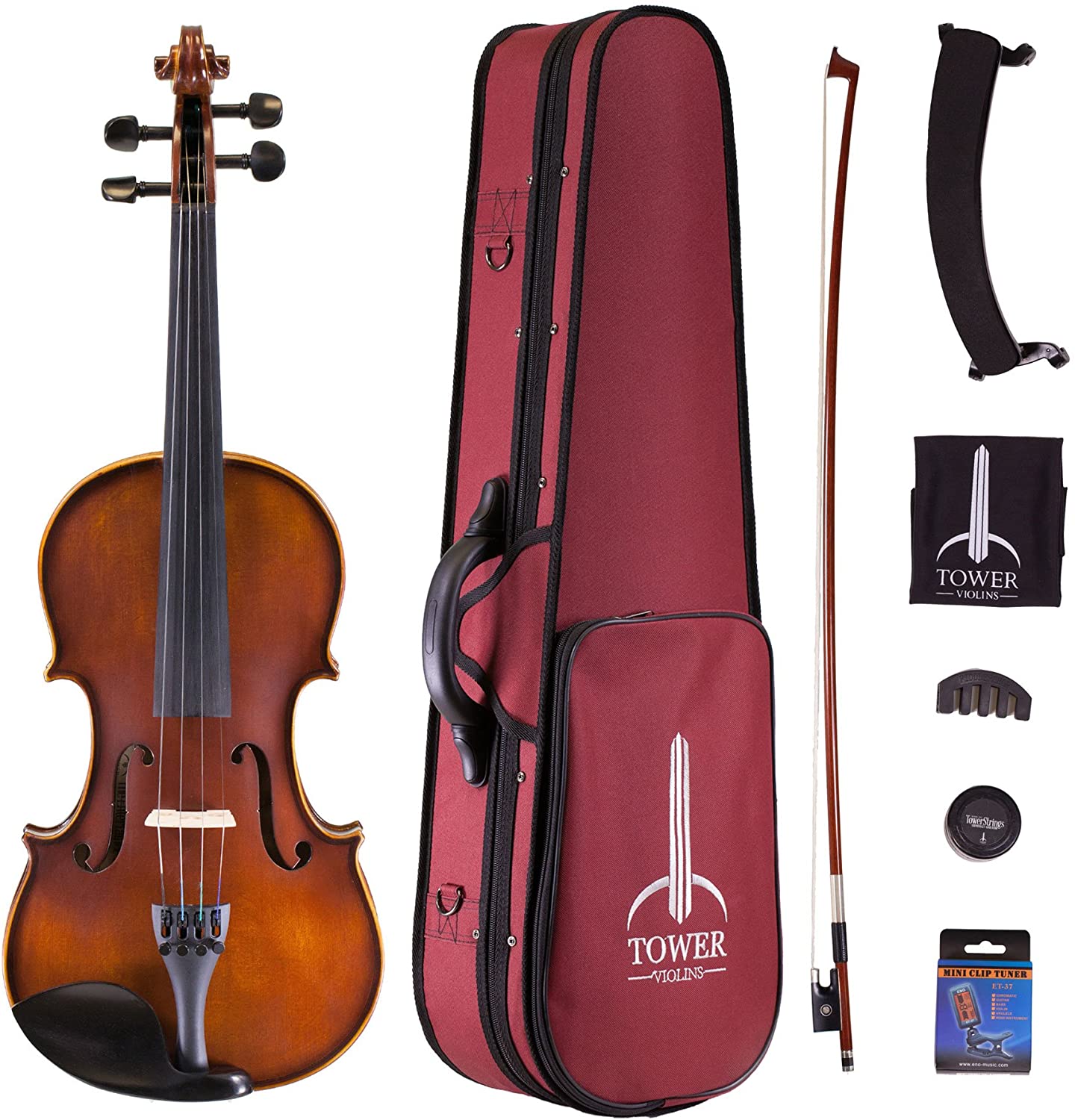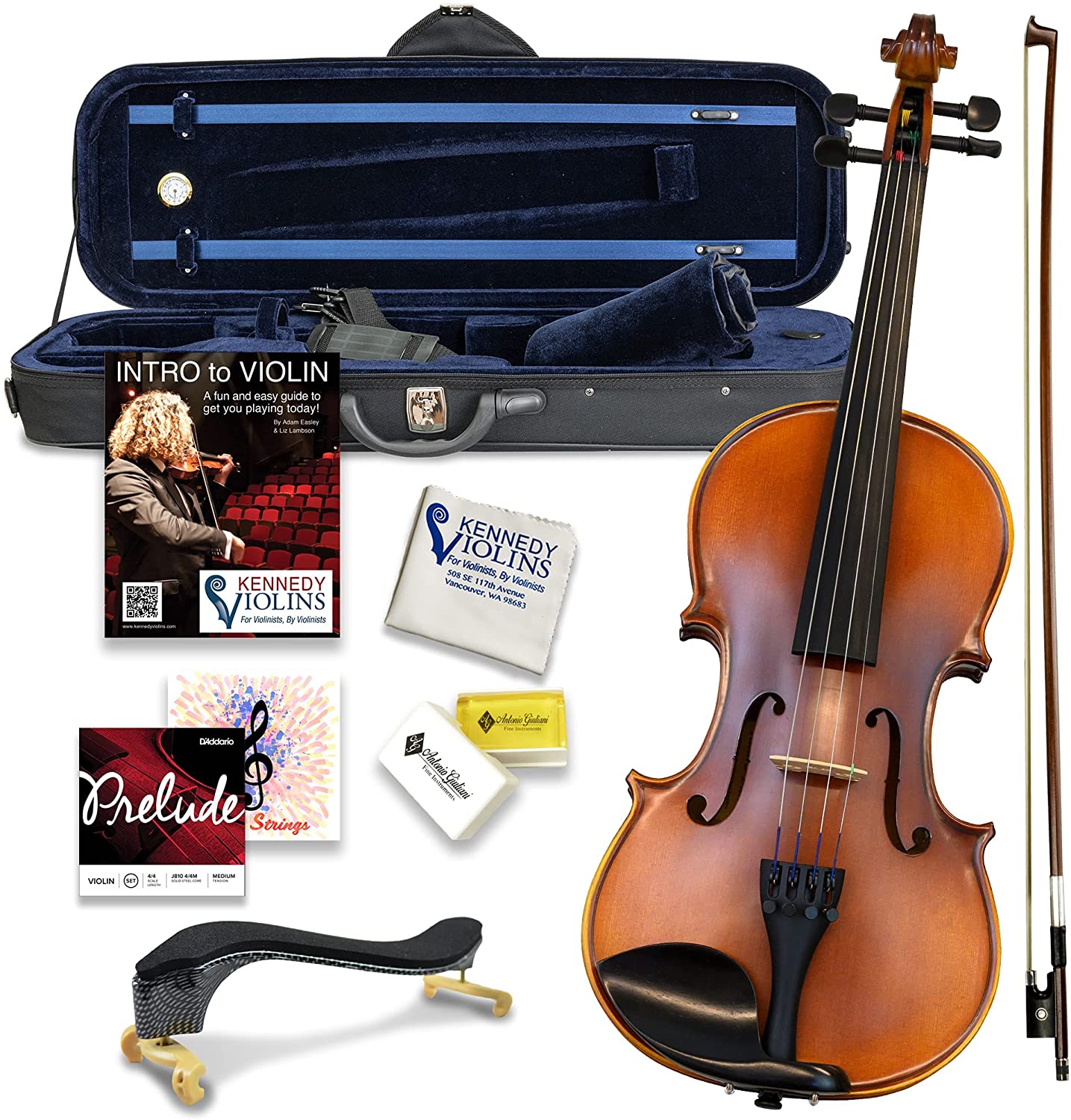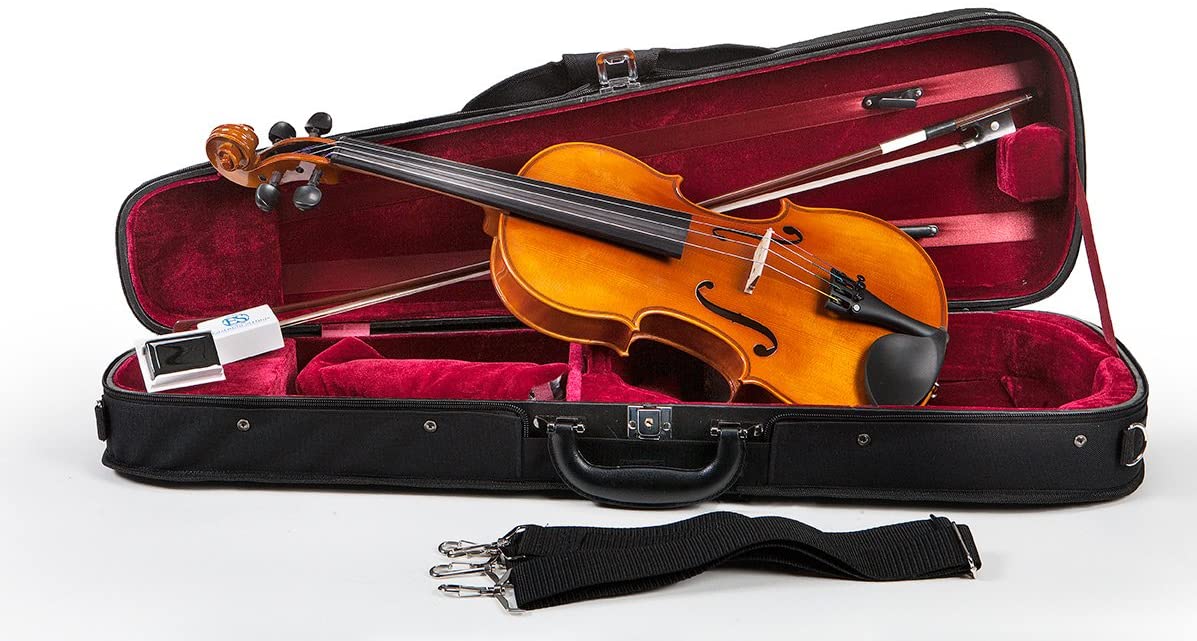- Best Fretted Violins Guide - May 31, 2022
- Best Yamaha Violins Brand Guide - April 13, 2022
- An Honest Mendini MV300 Review - March 31, 2022
I consider Cecilio to be the original cheap student instrument manufacturer and seller. When I first started playing the violin, Cecilio was the only thing readily available in the US on Amazon.
Other well-known brands were harder to track down or more expensive. This has changed significantly over the last decade, and now there are options on the market that easily outplay a Cecilio instrument in quality, longevity, and bang for your buck.
Still, Cecilio has a death grip when it comes to finding a violin for under 200 dollars. The CVN 200 is one of those violins, coming in under 150 dollars. Is it worth it to buy a violin this cheap? Well, let’s find out!
Pros Cons and Bottomline
I love the violin for many reasons; unfortunately, this violin, in particular, does not spark any joy. Cecilio is well known for inconsistent products and poor quality control. The CVN200 takes it up a notch by being made from some inferior quality materials, along with sounding and looking absolutely horrible.
The outfit itself is made up of poor-quality accessories that will need replacing quickly. The violin will likely come with the bridge down. You can set it yourself if you feel comfortable. Still, I recommend going to a luthier to give this violin a good look over and make sure there aren’t any other outstanding issues.
Overall you can do better, even from Cecilio. But if you really want a quality student violin, check out Kennedy Violins, Fiddlershop, Shar Music, and Johnson Strings. I particularly love the Tower Strings Entertainer violin outfit from Fiddlershop.
Pros
- Inexpensive starter violin
- D’addario Prelude strings, decent student quality strings
- Removable fine tuners
Cons
- Made from poor quality materials
- Accessories are prone to breaking or are challenging to use
- Cecilio suffers from poor quality control as a whole
- Will need to have the bridge set, preferably but a luthier who can check for other problems
Student Violins: What I Consider Quality
Buying a student violin differs from purchasing an intermediate or professional violin. Many people urge students to go into a shop to purchase a violin from a knowledgeable seller. I’m aware that that option isn’t always available to everyone, or some people do not want to go that route.
It is possible to find quality violins online, but you need to know what you are looking for and what to avoid. The quality of a student violin can be assessed by looking at three different areas:
The Violin Itself
While you can’t inspect the instrument yourself when buying online, you can get a grasp on the overall quality of the instrument through the materials used to build it. The body of the violin will be made of exceptional hardwoods called tonewoods.
For most orchestra strings instruments, the chosen hardwoods are maple and spruce. Maple will make up the back and sides, with spruce making up the top. Tonewoods are selected for their ability to resonate sound and produce tone. The best ones are considered to be from high-altitude mountains in Europe. But tonewoods are often sourced from China as well.
The neck, pegbox, and scroll will be maple, while the fingerboard will be made up of ebony. The fingerboard will be made from maple and dyed black like ebony on some student instruments.
Maple is an acceptable fingerboard material for lower-end instruments. Still, I prefer ebony for longevity’s sake, as it is very durable and can stand up the constant oil and dirt from your fingertips.
The Set-Up
The violins’ set-up comprises the soundpost, bridge, tailpiece and fittings, and the strings. A well-set-up violin will have a properly placed soundpost, a well carved and notched bridge with correct string height, pegs that are easy to turn but don’t slip, and a quality tailpiece with a properly placed end button.
It’s a big job, and a poorly set-up violin can affect the sound and how playable the instrument is, and how comfortable it is to hold.
The components used can give some insight into the violin itself. Still, ultimately, how well the luthier sets these components up affects the violin. However, some quality checks can be done before purchase.
I recommend purchasing a violin with removable fine tuners so if they break; you can easily swap them out. This is a major frustration of mine with poor quality built-in fine tuners. Cecilio is a prime example of this.
Tuning by pegs is difficult for young students with tiny fingers; I sometimes struggle to get a precise tune using my pegs even now, I’ve opted for geared pegs at this point.
The strings that come strung on the violin can also be an indicator of quality. Poor quality strings such as Cecilio’s in-house strings will immediately require replacement and are more likely to beak during tuning. I recommend looking for violins strung with D’Addario Prelude Strings or better.
Lastly, check the reviews for reported issues with any of these components, especially the bridge. A new bridge is expensive, but it may be required on cheaper violins. This is why I recommend buying from reputable sellers both online and in-store. You can be assured the violin will be set up and playable.
The Outfit
Student violins come in an outfit or a kit with everything you need to get started and play. This can be as simple as a case, bow, and rosin or as complicated as well Cecilio. It depends on the seller and the brand. In general, more prestigious brands like Eastman will come with less, but this is slowly changing.
The only accessories that matter are the bow, case, and shoulder rest. Everything else can either be replaced easily or doesn’t contribute to the overall quality of the outfit.
The bow should be well balanced and unwarped. I prefer to see carbon fiber bows over brazilwood bows for students. They are more robust, less prone to temperature and humidity damage, and cheap enough to be easily replaced.
Shoulder rests should be adjustable and comfortable for the student to use for an extended amount of time. Cases are usually small triangle things that barely hold anything, but they get students from point A to B.
The CVN200: Why It’s not the One For You
As I’ve said, the CVN200 doesn’t spark joy for me, and it’s not a violin I would ever recommend to someone. There are many reasons why, but it comes down to a few key factors. Build quality, outfit quality, and overall tone.
The Violin
The violin’s body is made up of a solid spruce top with a maple back and sides. This is pretty standard, and I assume that the tonewoods used are low-quality cut from young trees.
More than likely, the tonewoods have been carved to be thinner, producing a nicer tone at first but will slowly degrade into something akin to nails on the chalkboard, which is typically the opposite of a well-made violin, whose sound will become sweeter with age.
The fingerboard is made out of maple, which, as I addressed earlier, isn’t of the best quality. Still, it is acceptable for such a cheap instrument. The varnish is a shiny dark orange color that looks very cheap to me.
I love a deep burnt orange, but I can’t get on board with this color. It reminds me of the cheap mini souvenir violins you get at the Cremona Museum in Italy. More of a toy than a musical instrument.
The Set-up
Cecilio is notorious for poorly setting up their instruments. The CVN200 has a few perks on its side, mainly in the form of the tailpiece that has 4 detachable fine tuners. The pegs, chin rest, and tailpiece are made of boxwood.
This is highly unusual for student instruments; like the fingerboards, I typically see ebony as its standard and fits into an orchestra. But this isn’t a violin that would be playable in that setting, so I suppose it is a moot point.
As I’ve mentioned earlier, the bridge on this violin will come down. This means you will be responsible for placing it correctly or taking it to a luthier. I recommend the latter as the bridge on this violin isn’t likely to be appropriately shaped or be at the right height for a student violin.
A new bridge may even be required as that has happened to many people, including myself. However, I opted for a new violin since I had progressed quite a bit at this point.
The strings on this violin are strung with D’Addario Prelude strings which is an advantage, as the Cecilio branded strings are very brittle and of poor quality. Upgrading them could help the sound, but overall, with such cheap violin, it’s better not to waste the money and purchase something better altogether.
The Sound
There isn’t anything remarkable about the CVN200s sound. It’s just your essential student violin, a little on the brighter side compared to the CVN100, but I would say pretty close in tone quality to the CVN300. The small jump in price is worth it for the small quality upgrade.
I found the lower register to be a bit muddy and the higher register to be tinny and a little shrill. Although I didn’t detect any outright scratching, it may appear in time. Overall the CVN200 is a prime example of a cheap violin and its sound.
Alternatives to the CVN200
Finding an alternative to the CVN200 isn’t hard, whether you are looking on Amazon or from another retailer. I’ve rounded up a few of my favorites but don’t be afraid to check around and see what you can find.
Each of these choices comes from a retailer that I have personally had experience with, heavily researched, and ultimately trust. They also come fully set up by professionals and ready to play out of the case with quality accessories you won’t have to replace.
Keep in mind these are more expensive than most Cecilio violins. Still, they are of much higher quality, and you won’t need to spend extra money on better accessories or a new set-up, which pays for the price difference and then some.
Top Pick: Tower Strings Entertainer by Fiddlershop
I’ve been a longtime customer of Fiddlershop and stand firmly behind their products. In fact, at one point, everything but my instrument was from Fiddlerhsop, but currently, my strings are from D’Addario. The Tower Strings Entertainer is a violin from their student instrument line. You are getting a steal for the quality and the price of the outfit.
This violin follows the typical formula of spruce and maple tonewoods. Still, these have been aged for two years, giving the violin more personality and a better tone.
The ebony fingerboard and fittings with a carbon composite tailpiece are high quality. The fine tuners are built-in, but they have yet to break despite after 5 years, so I’m pretty confident they will hold up.
The outfit comes with a case, brazilwood bow, rosin, shoulder rest, practice mute, and tuner. The bow is excellent and well-balanced. I occasionally use mine as a backup still. I currently still use the mute, shoulder rest, and rosin as well. The tuner ceased to exist, but I’m sure it works I ever find it.
Runner Up: Bunnel Premier Violin Outfit
Kennedy Violins is another violin seller that I highly recommend. Based out of the east coast, they offer a variety of violins that are of very similar quality to what Fiddlershop offers. The Bunnel Pupil is their introductory violin featuring spruce and maple tonewoods and an ebony fingerboard and fittings.
The tailpiece is a Wittner tailpiece with built-in fine tuners. These are very popular and standard tailpieces for student instruments; I don’t mind them because they are higher quality and less likely to break. The violin comes fully set up with standard D’Addario Prelude strings!
The outfit includes a standard brazilwood bow that is well balanced and useable for a couple of years until a rehair is required. At this point, upgrading is necessary.
The case is my favorite part of this outfit. Unlike the typical small triangle cases, Bunnel provides an extensive and sturdy case with plenty of storage room for your accessories. Speaking of accessories, this outfit includes a shoulder rest, intro to violin book, rosin, and an extra set of their in-house branded strings. Over a modest outfit, your money will serve you well for a few years.
Ultimate Pick: Samuel Eastman VL100
While Fiddlershop and Kennedy Violins offers some lovely student violins, Eastman is perhaps one of the most well-known manufacturers of modern violins.
The EastmanVL100 is considered one of the more standard student violins and is often a rental for new students or through school programs. I personally play an Eastman VL305, which is an intermediate model, and I love it. I wouldn’t trade Winston for anything!
The VL100 features Chinese tonewoods with an ebony fingerboard and fittings. The tailpiece is similar to the Wittner tailpiece with built-in fine tuners. Since this violin is from a well-known dealer and set up by a professional, I’m confident in its ability to hold up.
It comes strung with Eastman Perlon strings, which I haven’t tested yet, but they will likely be warmer and more responsive compared to steel core strings. The outfit is pretty basic and includes a small case, rosin, and a brazilwood bow. You will need to purchase rosin separately for this outfit; check out our rosin guide here!
FAQs
Answer: I’m a fan of the CVN500 and 600. I also like the MV500 from their sister company Mendini. However, in general, I don’t recommend Cecilio right away unless someone specifies they need a violin for under $200.
The CVN600 is a bit of an anomaly as I’ve been eyeing it for a while for a backup violin due to its sound and overall appearance. But I would still steer a first-time owner towards Kennedy Violins or Fiddlershop for a better overall instrument.
Answer: Setting up the bridge requires placing it under the strings between the f-holes. You need to place the bridge precisely in the middle between the small slashes on each f-hole. The bridge should be facing with the slant going towards the E string.
This can be a confusing process, so I’ve included my favorite video to help you here. I recommend letting a luthier do this with a Cecilio violin. During this time, they can also check for any other problems with the violin.
Answer: No, not really. I mean, I’m sure you could sell them and make some money back, but they will never gain a substantial amount of value. I think mine gained 20 dollars worth of trade-in value during the time I owned it.
These certainly aren’t violins you will find in the attic and wonder if you hit a gold mine. They do make great toys, art projects, or decor when you’ve decided to move on.
Final Thoughts
The CVN200 is a poorly thought-out violin, but it’s not that surprising with Cecilio’s track record. While they can make a decent instrument and some of their higher-end models are undoubtedly passable, they often fail to produce consistent quality products.
Along with stuffing their outfits full of poorly made or useless accessories to convince you, it’s a great deal. With that said, the CVN500 is an acceptable alternative if you need a cheap violin. But, I highly recommend checking out the Bunnel Pupil or the Tower Strings Entertainer for a high-quality but affordable violin outfit.

